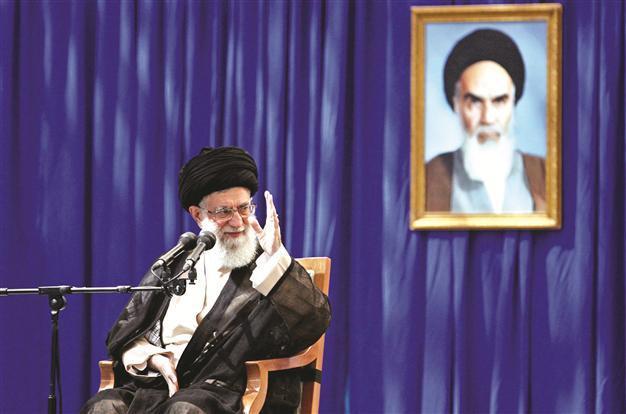Iran’s cyber crime unit in spotlight after death
DUBAI - The Associated Press

Iran’s supreme leader, Ayatollah Ali Khamanai, often refers to the need for stronger measures in the ‘soft war’ playing out in cyberspace with the West and opposition groups. Iran also claims its technicians are working on a self-contained Internet that would somehow give authorities the ability to filter content. AFP photo
The controversial death of an Iranian blogger that has sparked international outrage has again put Iran’s cyber patrols under the spotlight.
In his last blog entry, 35-year-old activist Sattar Beheshti wrote that Iranian authorities had given him an ultimatum: Either stop posting his “big mouth” attacks against the ruling system or tell his mother that she would soon be in mourning.
“We will tear down your cruel cage,” Beheshti typed on Oct. 29 before signing off. A day later he was arrested. Within a week, his family had collected his body. They began calls for an investigation that have been echoed by Washington, European allies and rights groups. Beheshti apparently fell under the custody of Iran’s cyber police, created last year with a wide mandate to crush web dissent.
The arrests of activists and claims of abuse in detention are commonplace in Iran, but deaths behind bars are much rarer. Iran’s judiciary responded to the growing pressure and authorized an investigation. It claims three of Beheshti’s interrogators have been arrested while post-mortem reports are studied.
Iran’s supreme leader, Ayatollah Ali Khamanei, often refers to the need for stronger measures in the “soft war” playing out in cyberspace with the West and opposition groups. Iran also claims its technicians are working on a self-contained Internet that would somehow give authorities the ability to filter content. Iran already tries to block dissident websites and has jailed several well-known bloggers, including Hossein Derakhshan, who helped ignite the Iranian blog boom in 2001 by posting simple instructions to create sites in Farsi. In March 2009, a 29-year-old blogger, Omidreza Mirsayafi, died while being held at Tehran’s Evin Prison.
Last month, the United Nations’ Office of the High Commissioner for Human Rights warned of “a further severe clampdown on critical voices” in Iran.
Even a former Iranian intelligence minister, Ali Younesi, called Beheshti’s death in custody a “disaster” for Iran’s leaders. Last week, Iranian state prosecutor Gholam Hossein Mohseni Ejehi said Beheshti was detained for alleged cyber crimes and handed over to cyber police for interrogation. The coroner’s report said the body had “signs of wounds” in five places but no broken bones, the semiofficial Mehr news agency quoted Ejehi as saying. But on Nov. 22, the Tehran prosecutor’s office raised the possibility Beheshti could have died from “excessive psychological stress,” suggesting that authorities are looking into causes of death other than abuse for the final report.
Beheshti was on the fringe of the Iranian online opposition. His blog, magalh91.blogspot.de, had fewer than 30 viewers in October. He had some run-ins with authorities including being detained in 1999 after student protests at Tehran University. But by 2012 he was just one of hundreds of voices on the web hitting the same notes: anger over the increasingly heavy hand of Iran’s authorities and frustration over the systematic crushing of the pro-reform Green Movement after the 2009 post-election unrest.
As recently as September, Beheshti’s blog posts were packed with political outrage, but nothing that would likely bring heat from officials. He chronicled the arrests and court hearings for activists and others and kept lists of opposition figured behind bars.
In October, however, the tone began to shift. Beheshti began to flirt with the well-known red lines in Iran, including direct criticism of Khamanei and calls for open revolt. It is not known why he began to ramp up his defiance, but it appeared to coincide with heavier pressure from the Web-monitoring forces.
